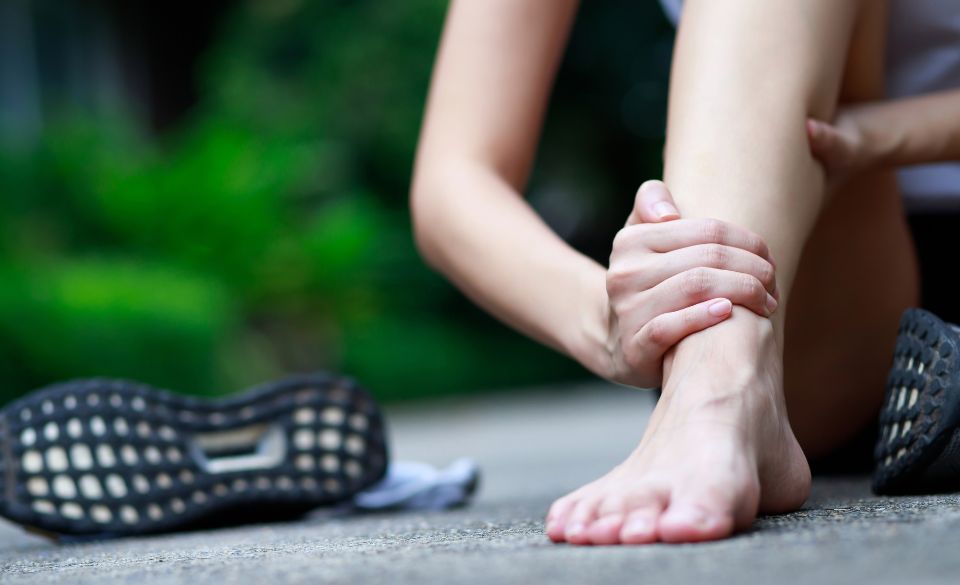
How To Get Rid Of Muscle Cramps In Your Legs
Page Contents
The leg muscles are composed of bundles of fibers that rhythmically contract and relax to facilitate movement. Cramps, on the other hand, represent abrupt, involuntary contractions, often occurring in the calf muscle. These spasms can range from brief, lasting only seconds, to enduring several minutes. Cramps may manifest in mild forms or intensify to the point of jolting you from a deep slumber. In the case of a sudden, agonizing muscle spasm in the leg, it’s referred to as a “charley horse,” a term with historical ties to legendary baseball player Charlie “Hoss” Radbourn, known for his frequent cramping episodes during the 1880s.
The triggers for cramps can sometimes be elusive. Physical exertion is a common catalyst, particularly following prolonged or hot-weather exercise. Muscles that are fatigued or dehydrated become irritable, making them more susceptible to cramping. Inadequate dietary intake of essential electrolytes like magnesium or potassium can also increase the occurrence of cramps by hindering the full relaxation of muscles. The risk of experiencing cramps tends to rise during pregnancy, possibly due to circulatory alterations and increased muscle stress from a growing abdomen. Age is another contributing factor, as cramps tend to become more frequent in middle age and beyond. Aging muscles tire more swiftly and become increasingly sensitive to reduced bodily fluid levels. Furthermore, certain medications like statins, prescribed for high cholesterol management, can have cramps as a potential side effect.
Common Symptoms Associated With Muscle Cramps
– Sudden onset of pain and constriction in a muscle, often localized in the calf.
– The transient formation of a firm lump or intermittent twitches beneath the skin.
In addition to the primary symptoms mentioned above, muscle cramps may also present with secondary effects and sensations that individuals often describe when encountering these involuntary contractions:
Muscle Stiffness: Following the acute pain and tightness of a cramp, it’s not uncommon to experience residual muscle stiffness in the affected area. This lingering discomfort can persist for a varying period, depending on the severity of the cramp.
Discomfort and Soreness: After a cramp subsides, individuals may continue to feel discomfort or soreness in the affected muscle. This post-cramp sensation can endure for hours or, in some cases, even days, particularly if the cramp was intense.
Reduced Range of Motion: Cramps can temporarily impair the normal range of motion in the affected muscle or joint. Individuals may find it challenging to move the affected limb freely during or immediately after a cramp episode.
Reflexive Stretching: When a cramp strikes, a reflexive response often involves individuals trying to alleviate the discomfort by stretching the affected muscle. This instinctive action, while well-intentioned, may lead to further pain if done too forcefully.
Anxiety and Discomfort: The sudden and unpredictable nature of muscle cramps can cause individuals to experience anxiety or apprehension, especially if they frequently endure cramping episodes. This emotional response can sometimes exacerbate the discomfort associated with cramps.
It’s essential to recognize the common symptoms and related experiences associated with muscle cramps to better understand and manage these occurrences. While cramps are generally harmless and tend to resolve on their own, they can sometimes be indicative of underlying health conditions, and persistent or severe cramping should be evaluated by a medical professional.
Diagnosing and Treating Muscle Cramps
Self-Treatment and When to Seek Medical Attention
In most cases, you can effectively manage and alleviate muscle cramps on your own. However, it’s advisable to consult a healthcare professional if your cramps are severe, frequent, or accompanied by other concerning symptoms such as numbness or weakness. Although rare, cramps can sometimes serve as a potential indicator of underlying issues related to the spine, blood vessels, or liver.
Self-Care for Muscle Cramps
Typically, muscle cramps will naturally subside within a few minutes. To facilitate relaxation and relief, consider gently massaging or stretching the affected muscle. Applying heat can be particularly soothing for tense muscles. Utilize a heating pad or a warm, moist washcloth to help ease muscle tightness.
Preventing Future Leg Cramps
To minimize the occurrence of leg cramps in the future, it’s essential to stay well-hydrated before and during physical activity. Adequate fluid intake is crucial for enabling muscles to contract and relax properly. Additionally, preventive measures involve warming up your leg muscles before exercise by engaging in activities like light walking or a gradual jog. Following your workout, devote a few minutes to stretching your leg muscles. For those prone to nighttime cramps, incorporating a set of stretches before bedtime can be particularly helpful in reducing the likelihood of cramping while sleeping.
Frequently Asked Questions (FAQ)
Are there any indicators or warning signs that leg cramps are impending?
Regrettably, leg cramps frequently manifest suddenly without prior warning signs. Nevertheless, several risk factors, including pregnancy and the use of medications known to trigger leg cramps, can heighten the chances of experiencing them. Familiarizing yourself with these risk factors can assist in preparing for and managing leg cramps more effectively when they do occur.
How would you describe the sensation of a leg cramp?
Leg cramps are typically characterized by the feeling of a muscle contracting and tightening, often creating a painful knot. The intensity of the sensation can vary from mild discomfort to severe pain, occasionally reaching an unbearable level. It’s not unusual for the muscles in the affected area to continue aching for hours after the cramp has subsided.
What is the most common location for leg cramps to occur?
Calf muscles are the most frequent site for leg cramps, although they can also affect the muscles in the thighs and feet.
Are there specific conditions or health issues that can predispose someone to leg cramps?
Yes, certain medical conditions like diabetes, peripheral artery disease, and neurological disorders can increase the risk of experiencing leg cramps.
Can dehydration lead to leg cramps?
Yes, dehydration is a known risk factor for leg cramps as it can disrupt the balance of electrolytes in the body, affecting muscle function.
Is there any way to prevent leg cramps during exercise or physical activity?
Staying well-hydrated, maintaining proper nutrition, and performing adequate warm-up and cool-down exercises can help reduce the risk of leg cramps during physical activity.
What are some effective home remedies for relieving leg cramps?
Massaging the affected muscle, gently stretching, applying heat, or taking a warm bath can provide relief from leg cramps. Additionally, ensuring adequate intake of magnesium and potassium through your diet may help prevent cramps.
Are there specific medications or supplements that can be used to manage leg cramps?
Quinine sulfate, vitamin B complex, and calcium channel blockers are sometimes prescribed to manage leg cramps. However, it’s essential to consult a healthcare provider before using any medications or supplements for this purpose.
Final Words – How To Get Rid Of Muscle Cramps In Your Legs
In conclusion, muscle cramps, often localized in the legs, are sudden and involuntary contractions of muscle fibers. These episodes can vary in intensity and duration, with triggers that include factors like exercise, dehydration, dietary deficiencies, pregnancy, age, and even specific medications. Cramps are characterized by primary symptoms such as pain, muscle constriction, and firm lumps under the skin. Additionally, they may lead to muscle stiffness, post-cramp discomfort, reduced range of motion, reflexive stretching, and emotional responses like anxiety.
Recognizing these symptoms is crucial for understanding and managing muscle cramps effectively. While most cramps resolve on their own and are harmless, they can occasionally be associated with underlying health conditions, necessitating medical evaluation for persistent or severe cases.
Treatment primarily involves self-care measures, such as gentle massage, stretching, and the application of heat to relax the affected muscles. For those seeking to prevent future leg cramps, maintaining proper hydration, engaging in warm-up exercises, and performing post-workout stretches can significantly reduce the risk of cramping. Although leg cramps can be unsettling, they are often manageable and rarely indicative of a more serious health concern.



